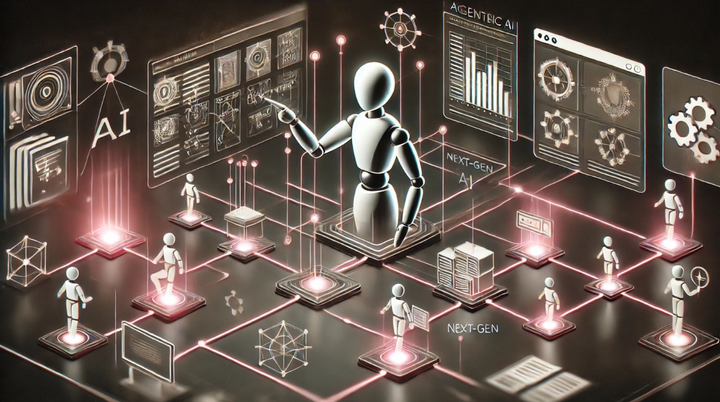Getting ROI From Your GenAI: A Look at The High Cost of Generative AI for Enterprises
A growing number of enterprises are realizing that the cost of Generative AI can be exorbitant. This article looks at why the price can be so high and unpredictable, and offers advice on how to implement GenAI with a cost-effective approach.

Artificial intelligence (AI) has revolutionized the way businesses operate – and generative AI, in particular, has been making waves with its ability to create new content, from text and images to music and videos. However, as exciting as this technology is, it comes with a hefty price tag that's leaving many enterprises wondering if it's worth the investment. In this article, we'll break down the specific costs associated with implementing generative AI in large companies.
The Cost of Computing Power
One of the primary reasons generative AI is so expensive is the massive amount of computing power required to train and run large language models or LLMs (the technology on which GenAI is based). LLMs rely on complex algorithms and large datasets, which demand significant computational resources. This means that enterprises need to be prepared to allocate massive, ongoing budgets to the use of hardware such as graphics processing units (GPUs) and tensor processing units (TPUs).
For example, training a single generative AI model can require up to 1,000 petaflops of computing power, which is equivalent to the processing power of 1,000 high-end laptops. This level of computing power doesn't come cheap, with estimates suggesting that the cost of training a single model can range from $100,000 to $1 million or more, depending on the complexity of the model and the dataset used.

Data Costs: The Fuel for Generative AI
Another significant cost associated with generative AI is the data required to train these models. High-quality, relevant, and diverse data is essential for training accurate and effective generative AI models. However – collecting, processing, and labeling this data can be a costly and time-consuming process.
Talent and Expertise: The Human Factor
Generative AI requires specialized talent and expertise to develop, train, and deploy these models. Data scientists, machine learning engineers, and AI researchers are in high demand, and their salaries reflect their expertise. According to Glassdoor, the average salary for a data scientist in the United States is over $118,000 per year, while machine learning engineers can earn upwards of $141,000 per year.
Additionally, enterprises may need to hire additional staff to manage and maintain their generative AI infrastructure, which can add to the overall cost. According to a report by Gartner, the average cost of hiring and training a team of AI professionals can range from $500,000 to more than $2 million per year.
Software and Licensing Fees
Many enterprises opt to use pre-trained generative AI models or software platforms. While these platforms can simplify the development process, they often come with significant licensing fees.
For example, Google's Cloud AI Platform charges $0.006 per hour for its AutoML Vision service, which may not seem like a lot, but can quickly add up to thousands of dollars per month for large-scale projects. Similarly, NVIDIA's Deep Learning SDK costs $2,995 per year for a single license, which can be a significant expense for smaller enterprises.Similarly, tools like OpenAI’s ChatGPT Enterprise and Anthropic’s Claude Enterprise both charge based on a complex and somewhat unpredictable tiered pricing structure.
Challenges Associated with High Costs
The high cost of generative AI poses several challenges for enterprises, including:
- Barriers to Entry : The high cost of generative AI can create barriers to entry for smaller enterprises or those with limited budgets, making it difficult for them to compete with larger organizations.
- Return on Investment (ROI): With costs running into the millions of dollars, enterprises need to carefully consider the potential ROI of their generative AI investments. If the returns are not significant, the investment may not be justified.
- Talent Acquisition and Retention: The high demand for AI talent can make it difficult for enterprises to attract and retain the expertise they need to develop, deploy, and maintain generative AI models.
- Data Quality and Availability: The high cost of data collection, processing, and labeling can limit the availability and quality of data, which can negatively impact the performance of generative AI models.
How to Implement GenAI While Avoiding Exorbitant Costs?
While the costs of GenAI can be significant, so are the potential benefits – ranging from improved efficiency and increased productivity to enhanced customer experiences and a boosted quality of overall output.
If you're considering investing in generative AI, here are some tips to help you optimize your costs:
- Start small: Begin with pilot projects or proof-of-concepts to test the waters and refine your approach.
- Partner with experts: Collaborate with AI research institutions, startups, or consultants to access specialized talent and expertise.
- Focus on data quality: Invest in high-quality data and develop efficient data processing and labeling pipelines to reduce costs.
- Monitor and measure ROI: Carefully track the performance and ROI of your generative AI investments to ensure they're delivering value to your organization.
By taking a thoughtful and strategic approach to generative AI, enterprises can unlock its potential while minimizing the financial burden. If you’re ready to get started, reach out to our team to learn about Arcee AI’s models and model training platform. We meet companies of all sizes wherever they are on their GenAI journey, equipping them with cutting-edge custom language models at a fraction of the price of solutions like ChatGPT Enterprise and Claude Enterprise. We look forward to hearing from you!


